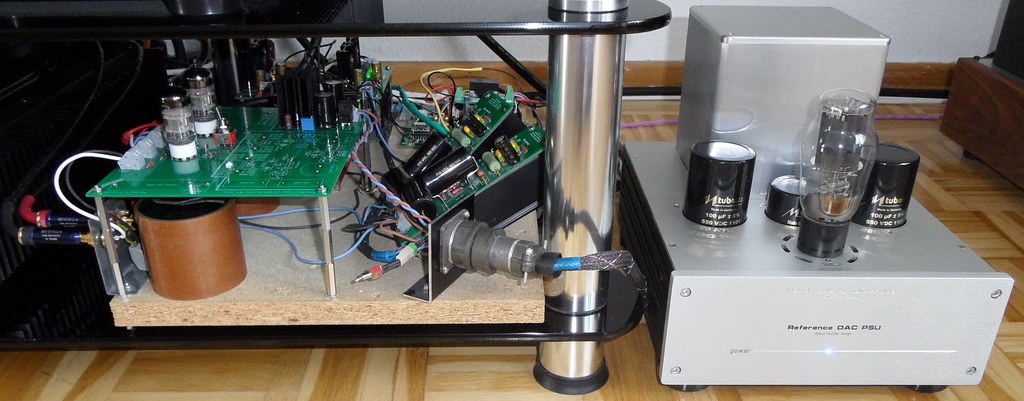Lots of circuits out there, but most are variations of a small set of archetypes. Let's see if I can put together a list:
1. Dedicated headphone amplifier IC. e.g.(
lme49860)
2. Battery powered, single stage, generic audio op amp. The ever-popular mint tin
cmoy.
3. Op amp + buffer (complementary transistor pair, diamond buffer, unity gain op amp, etc, in either integrated or discrete package.)
a. closed loop connection or "compound amplifier" configuration as developed by
Walt Jung.
b. open loop, two stage circuit, e.g. nwavguy o2 and my
sapphire amp.
4.
simple 2 or 3 transistor "introduction to electronics"-style amplifier
5. The "little big amp", a scaled back version of a transistor or vacuum tube power amplifier design. (Zen,
DoZ, transformer coupled SET amps)
6. The power follower. Single-ended MOSFET or BJT, with or without CCS load, voltage...

















